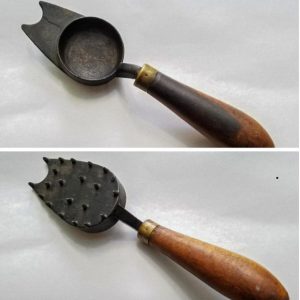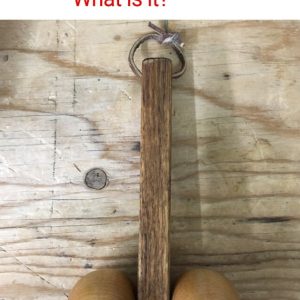There was a time when vintage rubber overshoes were as indispensable as an umbrella on a rainy day. These durable, waterproof protectors kept dress shoes clean, dry, and presentable. But beyond their practicality, they represented innovation, resilience, and even fashion. Let’s step back in time to explore the forgotten world of these once-iconic accessories.
What Were Vintage Rubber Overshoes?

Vintage rubber overshoes were designed to slip over regular shoes, protecting them from rain, mud, and snow. They were typically made from vulcanized rubber, a material that was both flexible and durable. Available in various styles, from simple slip-ons to those with buckles or zippers, they were a staple for men, women, and children alike.
In the early-to-mid-20th century, overshoes were a necessity, especially in urban areas where wet and muddy streets were unavoidable. Owning multiple pairs of shoes was a luxury, so these rubber shields helped prolong the life of expensive leather footwear.
The Rise of Rubber: A Revolutionary Invention
The story of rubber overshoes begins in the 19th century with a groundbreaking discovery—vulcanized rubber. In 1839, Charles Goodyear accidentally found that treating rubber with sulfur created a stronger, weather-resistant material. This innovation revolutionized the footwear industry, leading to the production of rubber boots and, eventually, overshoes.
By the early 1900s, rubber overshoes were mass-produced and widely available. Their popularity peaked during World War I and World War II, as soldiers needed durable footwear to withstand harsh weather conditions. After the wars, civilians embraced them as a practical solution for everyday wear, and companies produced millions annually to meet demand.
A Staple of Everyday Life
Picture a bustling 1940s city street: businessmen in sharp suits, women in stylish dresses, and children in school uniforms—all donning rubber overshoes to brave the unpredictable weather.
These overshoes weren’t just functional; they became a symbol of preparedness and social status. A polished pair of dress shoes protected by well-maintained overshoes signified respectability. Parents also appreciated the convenience of these slip-on protectors, as they helped avoid the hassle of constantly cleaning their children’s footwear.
Even in rural areas, where muddy roads were common, overshoes were a practical necessity. Farmers and laborers relied on them to keep their work shoes in good condition. They were lightweight, easy to store, and simple to slip on and off, making them an essential part of daily life.
Interesting Stories Surrounding Vintage Rubber Overshoes
A Symbol of Respectability

In the 1920s and 1930s, wearing overshoes wasn’t just about keeping feet dry—it was about maintaining a polished appearance. A businessman arriving at a meeting with clean, protected shoes was seen as professional and well-prepared. Overshoes became synonymous with class and organization.
The Hollywood Connection
Rubber overshoes even made their way into Hollywood! In classic black-and-white films, actors frequently wore them in rainy or snowy scenes. Costume designers recognized their practicality and authenticity, incorporating them into characters’ wardrobes to reflect the era’s fashion and social norms.
Resourcefulness During the Great Depression
During the Great Depression, people found creative ways to repurpose old rubber overshoes. Since resources were scarce, worn-out overshoes were cut into patches for household repairs, repurposed as insulation, or even transformed into makeshift toys for children. This ingenuity demonstrated the resilience of families facing economic hardship.
A Key Role in War Efforts

World War II saw a shift in rubber overshoe production. As military demands increased, factories that once made civilian overshoes began producing rubber boots for soldiers. These waterproof boots were essential for troops stationed in wet, swampy environments, helping prevent trench foot and other weather-related ailments.
The Decline of Rubber Overshoes
By the late 20th century, the need for separate rubber overshoes began to fade. Advancements in shoe manufacturing led to the development of waterproof and weather-resistant materials. Instead of layering overshoes over dress shoes, people opted for all-weather footwear, reducing the demand for rubber protectors.
By the 1980s, overshoes had largely disappeared from mainstream fashion. They became relics of the past, occasionally spotted in vintage shops or nostalgic family photo albums.
However, for those who grew up wearing them, vintage rubber overshoes remain a powerful symbol of an era when people valued durability, practicality, and preparedness. They evoke memories of childhood rainy days, the sound of rubber squeaking on wet pavement, and the comforting sense of being shielded from the elements.
A Collector’s Treasure

Today, vintage rubber overshoes have found a new life as collectible items. Footwear enthusiasts, historians, and fashion collectors seek them out for their historical significance and craftsmanship. Some rare styles, particularly those from well-known brands, fetch high prices in antique markets.
For those who appreciate old-fashioned practicality, modern rubber overshoes are still available—though they’re now a niche product rather than a household necessity.
Conclusion

Vintage rubber overshoes were more than just a functional accessory—they were a reflection of ingenuity, fashion, and everyday life in the past. From their role in protecting prized leather shoes to their contributions to war efforts and economic survival, these overshoes carried a legacy that extended beyond rainy days.
Though they have largely vanished from modern wardrobes, they remain a fascinating part of history. The next time you come across an old pair in an antique shop or see a black-and-white photo of someone wearing them, take a moment to appreciate their story. After all, even the simplest objects can hold a world of memories.


